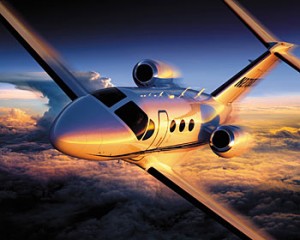
Estimates show that 15,000 high-paying jobs were lost in the U.S. during the past several months.
The ability of manufacturing to create wealth and high-paying jobs continues to be hampered by the global Great Recession. The latest evidence of how badly the economic crisis is affecting living standards comes from the very industry that supplies the titans of industry who brought on the crisis in the first place. Aviation might sell to multi-millionaires, but it largely employs skilled, middle class American workers, an increasingly threatened but highly productive group.
The General Aviation Manufacturers Association (GAMA) said that in the first three months of 2009 deliveries of general aviation airplanes totaled 462 units, a 41% drop from the same period last year, with industry billings falling 18.2% to $4.34 billion.
This is roughly the same decline that automakers are facing, but in general aviation, a category that excludes the largest airliners and military planes, the production numbers are much smaller, and the sales prices much higher. So just 462 units, or the output of one shift of a GM final assembly plant, translates into a billion dollar hit, perhaps not much by Washington’s standards but real money for people struggling in the real economy.
Industry estimates show that 15,000 good jobs evaporated in the U.S. during the past several months as such historic companies as Cessna, Mooney, Piper and Gulfstream grappled with the ongoing crisis. Cessna Aircraft Company in Kansas is the world’s largest manufacturer of general aviation airplanes. In 2008, Cessna delivered 1,301 aircraft, including a market-leading 467 Citation business jets, while reporting revenues of about $5.6 billion. Cessna has a backlog of $13 billion as of March 31, 2009, but it too has been laying off workers since last November, cutting about 6,000 of 15,000 employees, as sales dwindle and it reorganizes.
Overall general aviation used to be a $150 billion annual business with more than 1 million jobs directly attached to it. Indirect employment around aviation in the U.S. might be as high as 11 million jobs and maybe 5% of the gross domestic product. It remains to be seen how deep the ongoing cuts will go, and when the industry will recover.
“This is an extremely difficult time for our industry,” said GAMA President and CEO, Pete Bunce. “We are dealing first and foremost with the severe negative effects of a worldwide economic downturn, but also with unwarranted criticism focused on the industry.”
 The hardest hit segment was piston-engine powered airplanes, down 55.1% percent in the first quarter, with 179 units delivered as compared to 399 airplanes in the first three months of 2008.
The hardest hit segment was piston-engine powered airplanes, down 55.1% percent in the first quarter, with 179 units delivered as compared to 399 airplanes in the first three months of 2008.
Turboprop airplanes had slight growth in the first quarter with 92 units delivered, up from 89 units during the same period in 2008 for a 3.4% increase.
Business jet shipments fell 35.7% in the first quarter with 191 airplanes delivered, as compared to 297 business jets in the first quarter of 2008. The use of business jets, of course, was excoriated during congressional hearings on auto company bridge loans, even though private airplanes and government-owned ones are routinely used by congress and the administration, as well as the financial services companies that caused the ongoing economic rout.
|
First Quarter Shipments Of Airplanes Manufactured Worldwide |
|||
|
2008 |
2009 |
Change |
|
| Pistons |
399 |
179 |
-55.1% |
| Turboprops |
89 |
92 |
+3.4% |
| Business Jets |
297 |
191 |
-35.7% |
| Total Shipments |
785 |
462 |
-41.1% |
| Total Billings |
$5.30B |
$4.34B |
-18.2% |
Caught in the downturn is Honda’s fledgling aviation business. At the end of April, Honda Aircraft Company said it was delaying by a year the first deliveries of its $4 million HondaJet.
“Ongoing global aerospace industry business challenges have resulted in a delay in receiving critical components for conforming aircraft production, which will result in a new first flight target of January 2010 and projected first customer delivery in the fourth quarter of 2011,” the U.S. based company said in a statement. More than 100 orders are being held up.
“The reality is that the U.S. general aviation industry leads the world in innovation and remains one of the few American industries with a positive balance of trade,” GAMA’s Bunce added. “We will continue to work with governments around the world to recognize that general aviation can play a key role in propelling the economic recovery.”
GAMA is an international trade association headquartered in Washington, DC, representing 66 of the world’s leading manufacturers of general aviation aircraft, engines, avionics and related equipment. GAMA’s members also operate fleets of aircraft, fixed based operations, and pilot training and maintenance training facilities.
